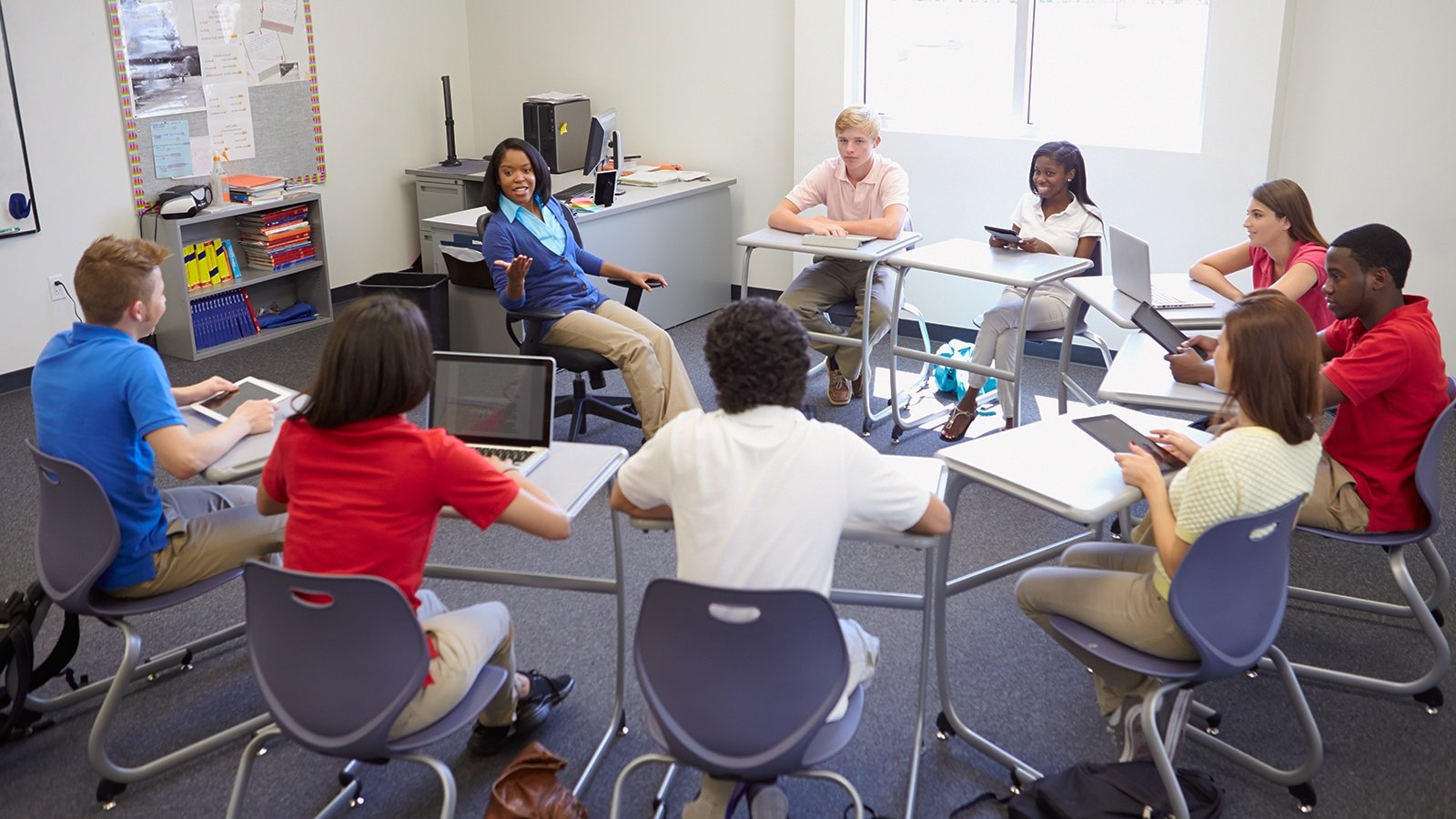
Using discussion boards can be an excellent way to engage students with important middle and high school social studies content.
It’s an easy way to reinforce social studies standards while also facilitating important 21st century skills like critical thinking, making arguments based on evidence, and working through ideas with peers and colleagues.
Many educators are hesistant when it comes to taking the discussion onto the internet, because of the potential for misuse of discussion boards. It’s true: online discussions require nurturing to be effective. A certain amount of careful planning is necessary to end up with a productive discussion. Following a few guidelines, you can begin to facilitate successful and productive online discussions with your students.
Get a free 30-day trial of Active Classroom, a complete digital curriculum for social studies.
Set clear expectations
Before beginning a discussion board topic, talk to your students and give them clear expectations. Let them know that this will be a structured discussion. Specifically, address each of these points with them:
- What do you want them to post to the forum?
- How much you expect them to engage with their peers?
- Give them examples of posts that you would consider unacceptable.
- Give them examples of posts that you would consider to be high caliber.
- Let them know specifically how participation will affect their course grade.
Try using a rubric like this one to make it clear to students how you will assess their participation, and make sure students are familiar with the rubric. Getting these details out in front from the beginning will support students, and probably make them more apt to post since they know exactly what is being asked of them.
Set the tone
After establishing guidelines, you might discuss the nature of good conversation to further set the tone. This will help students think through what discussions look like in the face-to-face world before taking them online.
Start by asking them to recall a good conversation they had recently with a friend, and ask them to share what they enjoyed about that conversation. If they need prompting, try these questions:
- What were the elements of that conversation that made it a good one?
- Did you feel like the other person acknowledged your ideas and feelings?
- Did you feel like the other person had a different opinion but was respectful of yours?
Then ask them to model some of those same elements in their online discussion. In this way, they have been included in setting the etiquette for the discussions, and are more likely to follow their own guideposts.
Model strategies that you would like the students to adopt
As you dive into use of your discussion board, make sure that you are always posting in ways that model the etiquette you expect your students to use. Here is a checklist for posting etiquette:
- Use discussion prompts that are open-ended and reflective so they require students to use higher order thinking skills rather than just posting true or false claims.
- Don’t just respond to posts with an answer—summarize a single or multiple students’ ideas and then close your observation with additional questions to keep the discussion going.
- Encourage students to make a personal connection to the topic at hand by doing so yourself.
- Be polite and constructive—deduct points from students who are not.
- Give students a chance to respond to each other before you jump in.
Choose etiquette rules that improve productivity over fussy ones that will be overly complicated for students. If you take time to set the tone in the beginning, students have the option to follow suit.
Continuing the discussion
The key to starting a conversation that continues on its own is setting the tone in the beginning. With these guidelines, there shouldn’t be any problem with keeping the discussion flowing productively. If there is a problem, go back and reestablish the original guidelines to remind students of your expectations.
Sign up to get more posts like this in your email inbox
Facilitate online discussions and more: Get a free 30-day trial of Active Classroom
Dr. Aaron Willis is the chief learning officer for Social Studies School Service, where he has worked in the field of interactive and digital education for more than two decades. His primary areas of interest include brain-based imaging, hands-on learning, and evidence-based reading and writing strategies. Dr. Willis oversees the development of Active Classroom with an eye toward implementing the latest pedagogic strategies in a manner that is intuitive and easy to use for both teachers and students. Based in Los Angeles, California, he travels frequently to work with teachers, focusing on practical solutions to their professional challenges.


Thank you for structured article, I really enjoyed when read this text. Clever discussion — very rare event in my class. I will send it to my teacher (she is writer on https://thesispanda.com), because this woman does mistakes in our online discussion’s organization.
Hi Eric, I’m do glad you found the article helpful. Let me know how it works in your class. 🙂
Great selection of modern and classic books waiting to be discovered. All free and available in most ereader formats. download free books https://www.philadelphia.edu.jo/library/directors-message-library